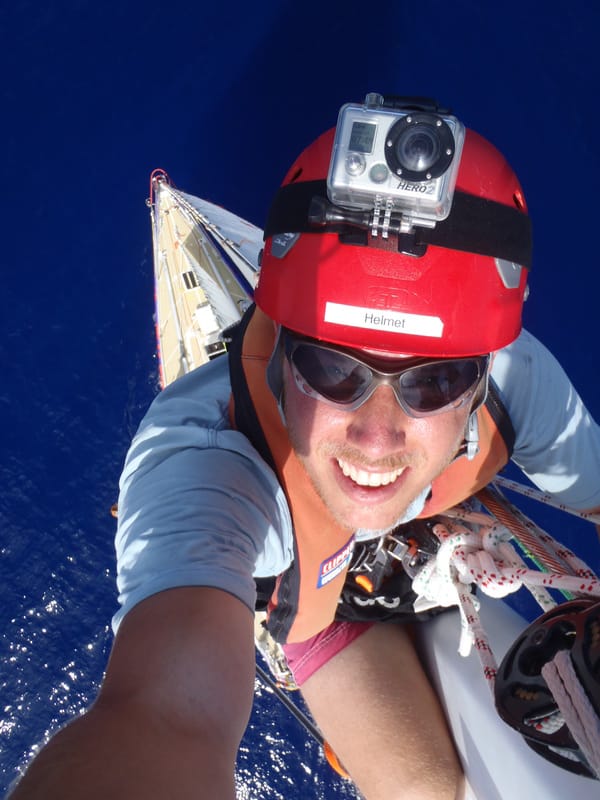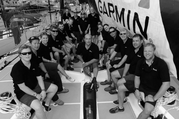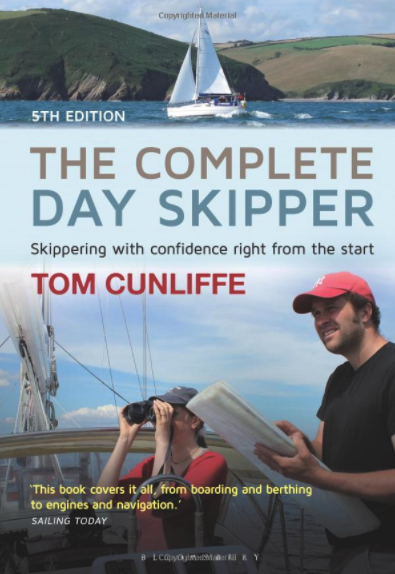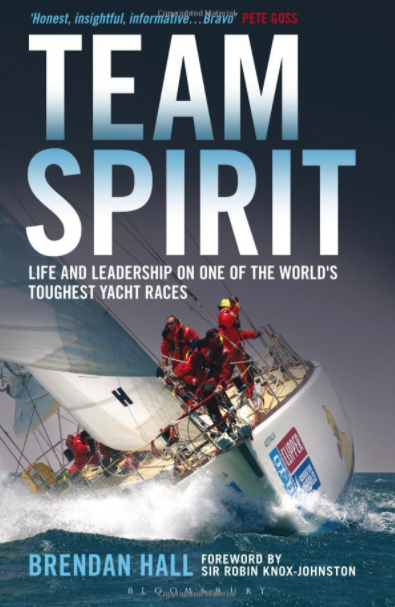|
Regular, preventative maintenance of your boat and its systems is critical when undertaking an ocean passage; even more so when you're pushing the boat in race trim. A significant part of your maintenance programme will include your sail wardrobe and standing and running rigging. To check the rig, blocks and halyards, you're going to need to do a mast ascent and this will mean undertaking a risk assessment. Yes, yes, 'Health and safety', but believe me, the first time you leave the rig in an unplanned swing, you'll be a believer! Climbing a rig when underway is different to when sitting alongside a dock.
If you plan on being up there a while, a 70 cm long strop with a carabiner clip on both ends can be useful for attaching yourself more securely to the mast whilst working aloft. Once the climber is ready, check the lines for the climb as follows;
Before you start the ascent, you are going to need something to stop you swinging off the mast and acting like a conker, halfway up. There are a lot of hard, sharp bits of metal up there and you get quite a speed up if you do start swinging. Trust me, I know. I'd recommend using your safety line. Clip it to your lifejacket hard point, then put it around a halyard that goes to the top of the mast (on the same side as the ascent) and clip it back to your jacket. This way, you are not 'connected' to the third halyard but, if you lose connection with the mast your swing will be limited to 2 or 3 metres. It'll still hurt, but you'll be under some control. If you don't have a spare third halyard then rig a downhaul line, attaching it to your harness strong point and running it down to deck, preferably through a block near the mast foot at deck level and back to a winch. This too, will help arrest a swing. On a very large vessel, a downhaul must be used, otherwise, there might come a time where the weight of the halyard in the mast overcomes the weight of the climber and at that point up you go! Not pretty. On the ascent, if you are fit and strong enough to climb, make sure your crew mates know so that they can take up slack as you go. If you're going to be winched, try and stay on the high side and ascend spiderman like, making sure to keep hold of the mast and rigging as you go. If the boat is heeled over, stay on the windward side of the mast and that way you have gravity working on your side. Watch you don't get fingers and heels stuck in the nooks and crannies of the rigging. As you go up, someone needs to be running the deck, making sure winches are being handled properly. Someone should also be 'eyes on' the climber at all times, relaying signals as they ascend. Once there, the halyards should be secured and I'd recommend a clove hitch on top of the winch turns at the end, so as to prevent a line coming off a winch or someone accidentally removing the line. On this point, never leave your winch when there is a crew member on the end of the line! Close the clutches on the halyards if you have them. On descent, first, open the clutches, then remove the clove hitches. Take the primary winch down to the number of turns that will allow you to ease the climber freely, but under control. This will vary dependent on the halyard and winch size but three turns is probably good. The secondary winch needs to be eased faster than the primary (otherwise it'll be a jerky and uncomfortable descent for the climber). You might consider removing turns to 2 turns and let the line run freely as the primary winch controls descent speed. Don't let the halyards run through your hands. Ease them in long, smooth actions, hand to hand - their crotch area will appreciate it. As the climber descends, the person in charge keeps watching the climber at all times and communicating with the deck crew. Once back at deck, make sure all halyards are secured properly to the pin rail, making sure that each halyard run is correct and not tangled around the forestay or rig. Always look up when handling halyards to prevent this eventuality. Despite all of this, it can still go wrong. Just make sure you remain attached to the third halyard or downhaul and a painful swing is the worst you can expect.
Comments
|
Mark Burkes is a former Clipper Race Skipper, a round the world crew member, Clipper Training Skipper & jobbing RYA Yachtmaster Instructor. He has over 250,000 miles logged.
Mark also writes professionally both online and offline and has written for Yachting World. ADVICE BY TOPIC
All
Fierce Turtle is not linked to nor is it in any way accredited by the splendid folk at Clipper Ventures. All opinion is my own.
Archives
July 2023
This blog is entirely free. However, if you'd like to make a small contribution towards web hosting costs it'd be very much appreciated.
|
fierceturtle.co.uk |
PRIVACY & GDPR POLICIES
© COPYRIGHT 2012-23. ALL RIGHTS RESERVED. 256 bit secure checkout powered by stripe. |















